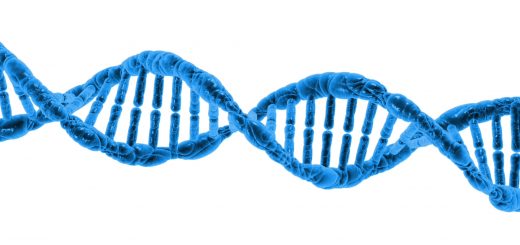The Autistic Revolution

Autism spectrum conditions are incredibly widespread – with recent numbers from America estimating that 1 in 59 children are affected1 – and yet are still largely misunderstood. People on the spectrum can have a wide variety of autistic traits which affect the way they communicate and perceive the world around them. Although they all have the lifelong disability in common it can show in many different ways: as the saying goes in the community, “once you’ve met one person with autism, you’ve met one person with autism”.
Autism of the Past: Rocky Research
Research on the subject has been a site of controversy ever since the syndrome was first described. Asperger’s syndrome – a condition on the autism spectrum – was first described by Hans Asperger, a German paediatrician. However, he has recently been in the news as research has implicated his active involvement in the Nazi regime and “euthanasia” of disabled children under his care2. In 1943, Leo Kanner is considered the first clinician to clearly describe autism, although his definition is now considered to be limited. He described the autistic children’s parents as lacking warmth – an observation led to the “refrigerator mother” theory of autism, which blamed the condition on women for not raising their children with enough attachment. The idea stemmed from Freud’s psychoanalysis and unfairly tried to convince parents, already confused over the unusual behaviour in their children, that they were the root cause for not being loving enough.
Modern autism research has also suffered from problems. The infamous work of Andrew Wakefield in the 1990s claimed to link vaccines with the onset of autism. His work was shown to be faulty and unethical and he was eventually banned from practising medicine in Britain, but not before the study had disastrous results. The media storm around his research caused many parents to withdraw their children from vaccine schedules: Wakefield’s legacy is the widespread resurgence of measles, as well as the implication that it is worse to be autistic than it is to suffer from potentially fatal diseases3.
More recently, leading autism researcher, Simon Baron-Cohen, is known for his proposal of the “extreme male brain” theory on autism, which is based on his claims that men’s brains tend to be systemising while women’s tend to be empathising. Baron-Cohen describes many autistic traits as being more systemising and therefore an extreme version of the male brain4. Research in this area is increasingly controversial – along with its underlying research on sex and gender – as it falls under the critical eye of other scientists, who have shown that the original study behind the theory is fundamentally flawed56. This has also resulted in traits that do not fit into the narrow systemising category often being overlooked – which has disproportionately affected the under-diagnosis of autistic women, who can present autism differently from men7.
The problems found in research are not small mistakes that can be swept under the rug but have ongoing impacts on the lives of autistic people. Mistaken theories can severely affect the amount of support available to those who need it. In the UK, research by the University of Leicester has shown that many adults on the spectrum have never been given a diagnosis8. Ongoing efforts in undoing these misconceptions are therefore vital to improve awareness, reduce misdiagnosis and provide better support.
Autism of the Future: Self Advocacy and Revolution
While all this was happening, autistic children were growing up into autistic adults, who have increasingly begun to advocate for themselves. In the early 90s, the first autistic-run organisation – Autism Network International – was founded. Since these beginnings, a new movement known as neurodiversity has arrived, which celebrates people on the spectrum as being “different, not less”. This is based on the social model of disability, a framework which says that the problems faced by disabled people are due to barriers placed by society rather than a person’s impairment. Some on the spectrum have become famous, highlighting the wide range of abilities autistic people have; Chris Packham, Sir Anthony Hopkins and Susan Boyle are some of the celebrities who have recently been open about their diagnoses. Now, the movement is causing major changes in how autism is researched by making their voices heard.
Gill Loomes is an autistic PhD student studying the Mental Capacity Act (2005) at the University of Leeds and also a tutor for the Autism Centre for Education and Research at the University of Birmingham. As well as her vital research, she is an active advocate for her community. Together with a group of other researchers and autistic activists, she helped to found the Participatory Autism Research Collective (PARC): this initiative helps to promote involving autistic people more directly in research9. PARC has now run multiple workshops to bring the two communities closer together, exploring themes such as how autism affects gender identity and providing training opportunities for autistic researchers in areas like public speaking. So far the organisation has expanded to host events at universities in London, Birmingham, Sheffield and Nottingham.
Participatory research is a key aspect of the central tenet of disability rights: “nothing about us, without us”. Speaking to theGIST, Gill believes that: “if we are truly concerned with both the quality and ethics of autism-related research, then this has to be our aim for such research too. Robust, insightful research into autism that accurately reflects and represents autistic people and our “truth” can only be achieved with the full engagement of the autistic community.”
Another influential autistic activist is Cos Michael, who consults with research projects to ensure they consider the needs of their subjects. Cos’ key interest is how autism affects adults as they age – a vital area of research – especially considering the mortality rates associated with the condition. One study has shown that those on the spectrum have an average life expectancy of 54 in comparison to the age of 70 in the rest of the population10. Cos has been advocating for increased research in ageing such as the menopause, bereavement and age-related social isolation 11.
As we increasingly work together, research is also moving away from areas that autistic adults perceive as having less benefit. People describing their own traumatic experiences with ABA (Applied Behaviour Analysis) – a common therapy in the US which seeks to “retrain” autistic children to act in a socially acceptable way – has encouraged the idea that people on the spectrum may be healthier if they behave in a way natural to them. It is hoped that in the future, instead of attempting to make autistic people conform, improved methods of two-way communication will be explored, such as the increasing use of AAC (augmentative and alternative communication) devices12.
The neurodiversity movement is allowing autistic adults and autism researchers – groups which are not mutually exclusive – to work more closely together than ever. Researchers are beginning to work with autistic people rather than on them. There’s still a long way to go – many autistic people still struggle to gain access to peer support initiatives like PARC, and many researchers in the field continue to work without autistic voices. But, by speaking up for what is needed and listening in return, a revolution is happening.
This article was specialist edited by Michael Whitehead and copy edited by Sara Cameron.
References
- https://edition.cnn.com/2018/04/26/health/autism-prevalence-cdc/index.html
- https://www.nytimes.com/2018/04/19/world/europe/hans-asperger-nazis.html
- https://globalnews.ca/news/4047765/measles-anti-vaccine-autism-study/
- https://www.spectrumnews.org/news/study-on-extreme-male-brain-theory-of-autism-draws-critics/
- https://www.writingonglass.com/content/gender-differences-science
- https://www.forbes.com/sites/emilywillingham/2017/02/28/dont-believe-the-hype-around-autistic-women-having-a-male-brain/#1bbd85f215bc
- http://library.autism.org.uk/Portal/Default/en-GB/RecordView/Index/45876
- https://www2.le.ac.uk/offices/press/press-releases/2011/may/2018most-adults-with-autism-go-undiagnosed2019-new-findings
- https://participatoryautismresearch.wordpress.com/
- https://www.nhs.uk/news/neurology/people-with-autism-are-dying-younger-warns-study/
- http://network.autism.org.uk/knowledge/insight-opinion/autism-ageing-and-women-not-invisible-just-ignored
- https://www.theguardian.com/society/2015/mar/20/autism-does-aba-therapy-open-societys-doors-to-children-or-impose-conformity











Thank you for an interesting, well researched and well written article.